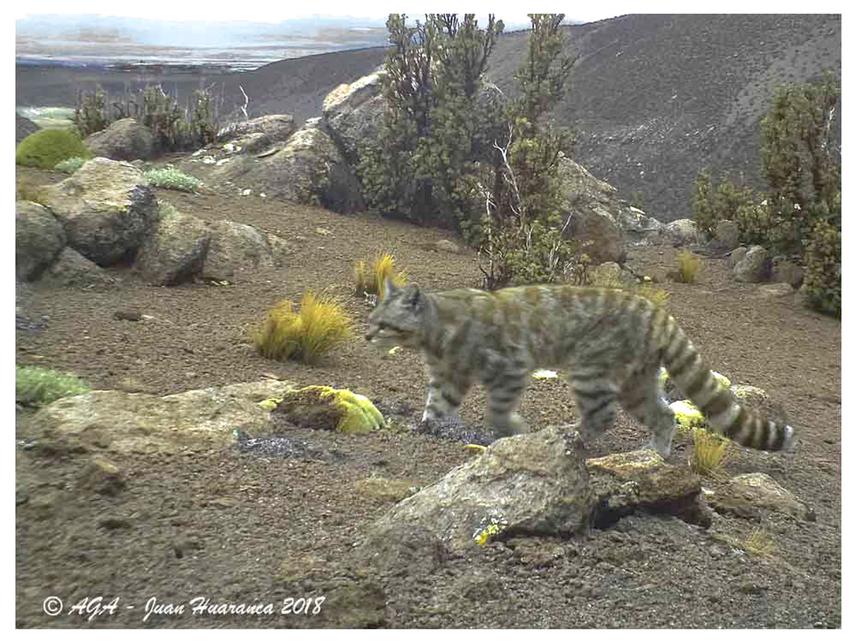Juan Carlos Huaranca
The camelids' grazing as llamas has increased in the Sajama National Park, traditional good management practices are being abandoned, threatening species such as the Andean cat (Endangered) whose main threat is habitat loss and degradation. Currently there is no regulation in the Sajama NP to the increase in livestock. This research aims to establish how the Andean cat is affected by livestock grazing. We will evaluate how this activity directly affects the use of space and increasing the perception of risk to be damaged, and indirectly effect as change in prey abundance. Also, we will provide a guide to management practices in llamas-grazing.

Andean cat in Sajama National Park.
In the central highland of Bolivia, llama husbandry is the primary and most widespread activity among local people in the region. Grazing of these animals takes place without any regulation, and may have strong negative effects on flora and fauna. The Andean cat has been classified as Endangered (IUCN, 2016), and loss or degradation of optimal habitat were identified as the main problem for its conservation. Grazing could be an important factor that contributes to this problem, presumably due to the constant increase in the number of camelid cattle and to the abandonment of good husbandry practices. The Sajama NP is one of the two most important areas for Andean cat conservation across its range in Bolivia. Thus, we want to elucidate if livestock grazing principality llamas affect the Andean cat and how does it, aiming to propose action against to habitat degradation as the most important threat to the species.
We will use the camera traps chambers to register the presence of Andean cat in 36 sampling stations, in each station we will quantify the abundance of prey and the characteristics of the habitat through the realization of transects. We will also quantify the number of llamas that graze in the area of each sampling season and signs of human activity as a result of grazing. The results of this project we will help to developing a workshops with local people and administrative staff of protected area for search potential actions that help to minimize te effect of llamas grazing on the habitat of Andean cat.
Also, this results of this project will provide empirical information that can be used in any grazing area where increases in livestock abundance and their negative effects on medium or small sized carnivorous species have been identified, by providing criteria for their evaluation and management of herds.